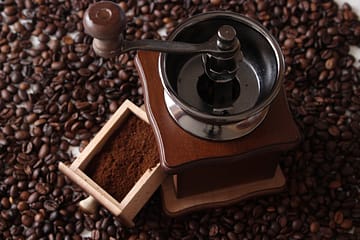Latte art has not only transformed the way we view coffee, but it has also become a symbol of the modern coffee culture, offering baristas and enthusiasts alike a way to express their creativity through milk and espresso. This comprehensive guide dives into the intricacies of latte art, providing detailed techniques, insights into the tools required, and tips for beginners and seasoned baristas. Whether you’re a casual coffee drinker or a professional looking to refine your skills, understanding the art and science behind latte art can significantly enhance your coffee experience.
Introduction to Latte Art
Latte art involves creating designs on the surface of espresso-based drinks, specifically lattes, by pouring steamed milk into a shot of espresso. This technique results in appealing patterns and textures that combine the robust flavors of espresso with the creamy smoothness of steamed milk. The contrast between the dark coffee and the white froth allows for a range of artistic expressions.
Understanding the Essentials
Latte art is a skill that marries culinary science with artistic expression, requiring a balance of precision and creativity. Here are the fundamental components:
- Espresso: A strong espresso shot forms the essential canvas for latte art. The espresso must have a rich crema, which helps support the milk patterns.
- Milk and Steaming: The type of milk used affects the outcome. Full-fat milk is often recommended for its creaminess, but alternatives like oat or almond milk are also popular. Properly steamed milk should be velvety and free from large bubbles, creating the perfect texture for pouring.
Tools of the Trade
To create latte art, you need the right equipment. This section covers each tool and its purpose.
- Espresso Machine: A reliable machine with a capable steam wand is crucial for both brewing espresso and steaming milk.
- Milk Jug (Pitcher): A good quality stainless steel pitcher with a pointed spout gives you control over the pour, which is crucial for detailed designs.
- Thermometer: Keeping milk at the optimal temperature (around 60-65 degrees Celsius) ensures it remains stable and frothy.
- Fine Sieve: To remove any accidental large bubbles from the milk, ensuring a smooth texture.
Techniques for Beginners
Starting with simple designs can build confidence as you learn the fundamentals of milk pouring.
- Heart: Pouring the milk from a low height into the center of the cup, then quickly lifting and cutting through the middle, creates a heart shape.
- Rosetta: Starting from the cup’s side, move the pitcher back and forth while slowly moving it backward to create a layered leaf pattern.
Intermediate Designs
As you master basic skills, you can move on to more challenging designs that involve multiple steps or more precise movements.
- Tulip: Similar to the heart but involves “stacking” multiple hearts on top of each other to create layers.
- Swan: An advanced pattern that combines a rosetta and a heart to form the elegant shape of a swan.
Advanced Techniques
For those who have honed their skills, these techniques are challenging and rewarding:
- Portrait and Character Art: Using a toothpick or a thin tool to manipulate the milk foam, skilled artists can create detailed faces or characters.
- 3D Latte Art: Sculpting the milk foam into shapes like flowers or animals that rise above the rim of the cup.
Tips for Perfecting Your Latte Art
Achieving perfection in latte art requires patience and practice. Here are some tips to help you refine your skills:
- Consistency: Practice consistently to understand how different factors affect the outcome. Each cup is an opportunity to improve.
- Milk Temperature: Always aim for the sweet spot in milk temperature to ensure optimal texture and stability.
- Clean Equipment: Keep your tools clean, as old coffee residue or milk can interfere with the quality of your espresso and steamed milk.
Common Challenges and Solutions
Every barista faces challenges when learning latte art. Here’s how to overcome some common ones:
- Wobbly Patterns: Ensure your hands are steady and that the cup is level.
- Faint Designs: Adjust the contrast by ensuring the espresso has a strong crema and that the milk is properly steamed.
The Cultural Impact of Latte Art
Latte art is more than just aesthetics; it’s a hallmark of coffee culture that signifies care and quality. It’s a talking point that brings coffee enthusiasts together and can elevate the status of a cafe.
Integrating Latte Art into Your Routine
Incorporating latte art into your daily coffee routine can transform your coffee experience, turning a simple drink into a moment of joy.
Conclusion
Mastering latte art takes dedication, but the rewards are tangible. Not only does it enhance the visual and sensory experience of coffee drinking, but it also instills a sense of pride in the craftsmanship involved. Whether at home or in a cafe, the pursuit of perfect latte art is a rewarding journey that reflects both skill and creativity.



0 Comments